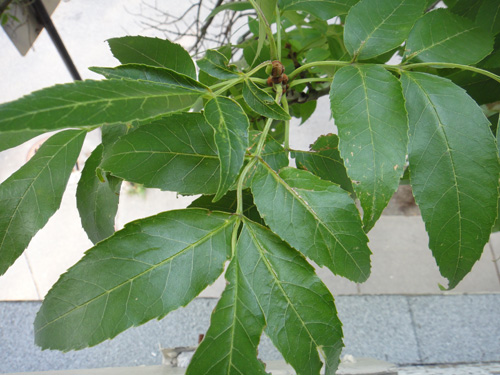

It witnessed the passage of Lieutenant Governor Simcoe on Wednesday September 25th, 1793, on his way to Penetanguishene. It was a mature tree when Benjamin Frobisher passed by, recommending in a 1784 report, that the Northwest Company use this as the preferred route to the West. It was part of the forest canopy by 1764 when Alexander Henry passed by on June 19th with a group of Mississaugas on his way to Fort Niagara from Mackinac, where he had been taken prisoner the previous year in the Pontiac wars. Historical/Cultural Significance: This was a young tree when the French established their second trading fort, Fort Toronto in 1749 at the foot of the Portage on which the tree stands - the fort from which Toronto takes its name.

It also dominates the well-treed park site despite the fact that it is separated from the park by the width of the roadway. It was on a list of significant trees compiled by the arborists in the former City of York. The tree is well known and loved in the community. Partnered with the Board of Education the Agency is one of the oldest and most respected organizations in the country, helping pregnant and parenting young women, ages 13-21. The Blake house burnt down and was replaced by the present building, which opened February 12, 1925. Clair and Bathurst Streets in 1912. The "Humewood House" opened on April 23, 1912. They purchased the Blake property near St.

His son, the Honourable Edward Blake (1833-1912) was the second Premier of Ontario, 1871-1872, a Canadian Constitutional expert, and federal Liberal leader 1880-1887.įollowing a Mission in 1911, the Anglican congregation of St Thomas determined to establish a maternity home for unwed mothers. William Hume Blake (1809 - 1872) was first professor of common and civil law at King's College and was elected to the Legislative Assembly in 1847.

It is located on the headwaters of Garrison Creek in what was the parkland of the Blake Estate, known as "Humewood". Historical/Cultural Significance: The tree is of Provincial significance, possibly National, through its association with the Blake family. The Park, with 60 houses on 50 acres, was named a Heritage Conservation District in 1985. Named after Wychwood Forest in Oxfordshire, it was founded in 1874, and is well known for its Arts & Crafts houses, Taddle Creek and pond, and 800 or so significant trees, including several hundred large White and Red Oaks, as well as Black Locust, Bassword, Beech and Hemlock. Historical/Cultural Significance: Wychwood Park is one of Toronto's unique neighbourhoods, and its natural landscape is a critical part of it.


 0 kommentar(er)
0 kommentar(er)
